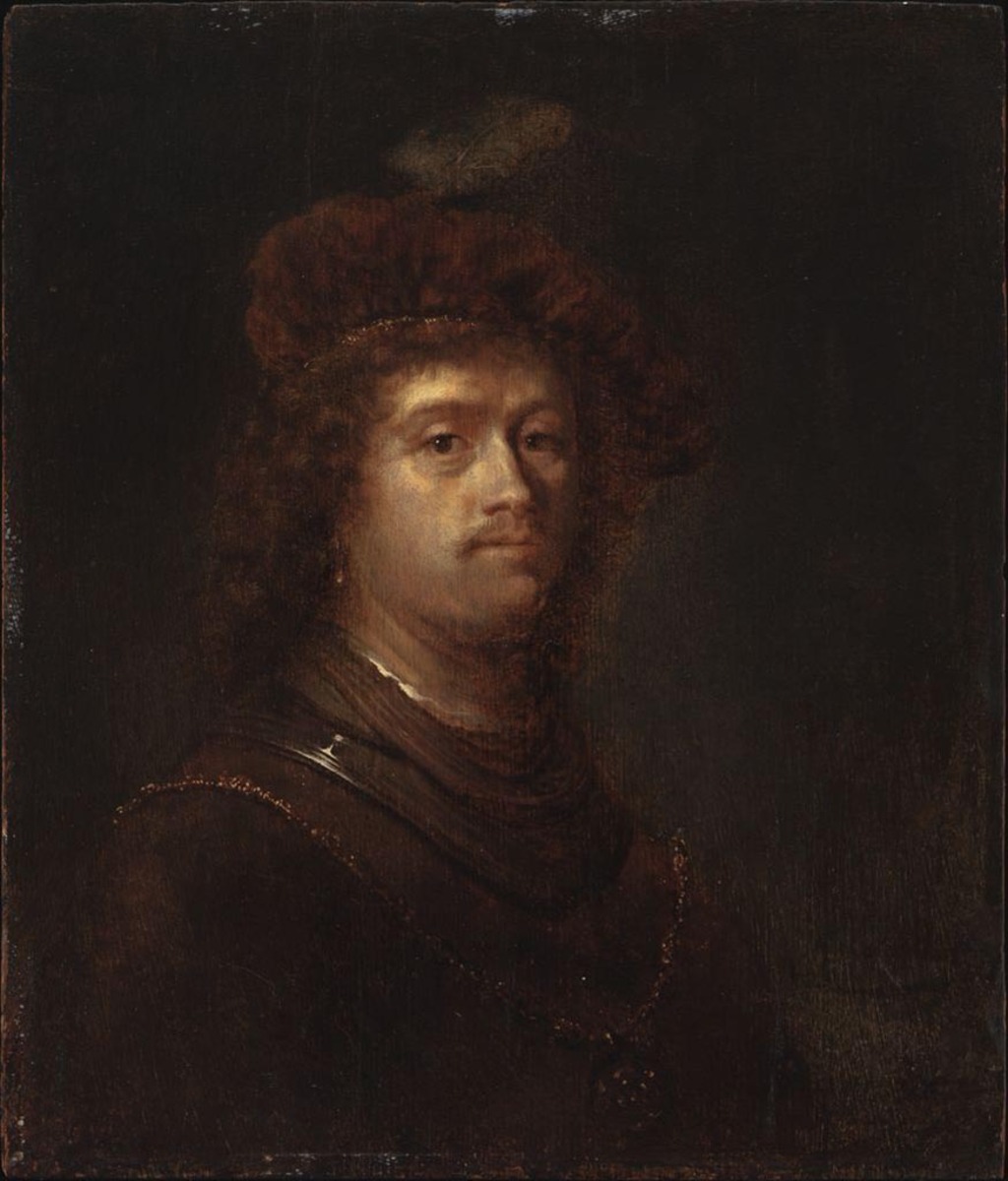Style of Rembrandt van Rijn, Dutch, 1606 - 1669
Study (Tronie) of a Man with a Collar Plate, late 17th or early 18th century
Oil on wood panel
12 7/8 × 11 1/8 in. (32.7 × 28.3 cm)
Painting
Gift of Baroness Tamara de Kuffner de Lempicka
1967-29 DJ
Learn More
This painting by an unknown artist is an example of a tronie, a genre of artwork that became popular in the Netherlands in the 17th century. The term is derived from the Dutch word tronie, meaning “face” or “expression.” Unlike traditional portraits, which seek to capture the likeness of a specific person, tronies served as character studies. They focused on facial expressions, psychological states, or costumes to portray archetypes or historical figures rather than the sitter’s true identity. Many tronies, like this one, feature subjects dressed in exotic costumes, reflecting a fascination with foreign cultures and historical fashions. These costumes were not necessarily accurate but were used to add an element of intrigue and exoticism to the artwork. Working in the style of Dutch master Rembrandt van Rijn, the artist employed strong contrasts between light and shadow, a technique known as chiaroscuro. The intense lighting both enhances the illusion of three-dimensional space, while adding drama to the image. Likely completed many years after Rembrandt’s death, the work closely resembles his early self-portraits, illustrating the artist’s ongoing influence in Dutch painting.
